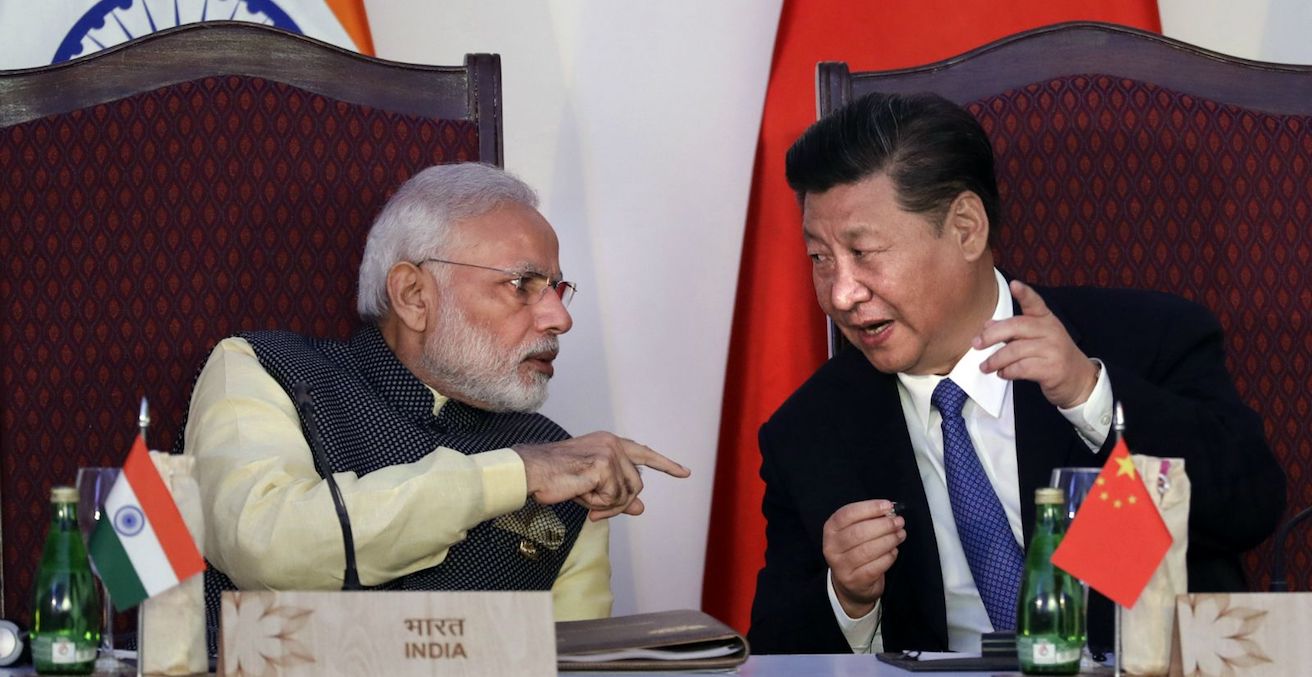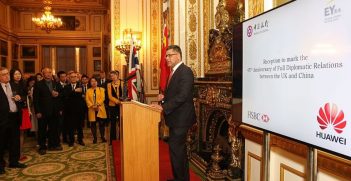Has India Blinked?

Indian Prime Minister Narendra Modi’s announcement that he plans to visit China for an informal summit with President Xi Jinping is part of a reset strategy vis-à-vis Beijing that New Delhi has embarked upon in the last few months.
It’s the culmination of a series of outreach measures and comes on the heels of Defence Minister Nirmala Sitharaman’s attendance at the Shanghai Cooperation Organisation’s (SCO) defence ministers’ meeting and External Affairs Minister Sushma Swaraj’s presence at the corresponding foreign ministers’ event in China this week. Modi’s visit will put the official stamp on the ‘reset’ and is likely to have significant implications for the region.
Notably, its speculated that Modi’s upcoming visit is the result of an invitation from Beijing and is even more interesting because he is already scheduled to attend the SCO summit in China in June this year. It appears that the Indian government’s overtures to China in recent months, including visits by the Indian foreign secretary and national security advisor, and the withdrawal of its support to a Tibetan event held in New Delhi, have borne fruit and are being reciprocated by the PRC.
More importantly, in what has been interpreted as shameful kowtowing to Beijing, India refrained from intervening to resolve the political crisis in the Maldives in February, ignoring calls from several Indian defence analysts to take definitive action. Furthermore, there are already rumours that India will remove its blanket opposition to China’s Belt and Road Initiative (BRI), even though it would continue to oppose the China-Pakistan Economic Corridor.
Remarkably, this apparent thaw in relations comes months after the face-off between the two Asian giants in Doklam near the triboundary junction of China, India and Bhutan, a crisis in which India had maintained a steadfast resolve and appeared to have won diplomatic leverage. Moreover, persistent Chinese opposition to India’s aspirations to join the Nuclear Suppliers’ Group and become a permanent member on the United Nations Security Council are long-standing thorns in the relationship.
As well, China’s move at the United Nations to block the listing of Jaish-e-Mohammad group leader and mastermind of attacks on India, Masood Azhar, as a terrorist served as another major irritant. At a time when Chinese assertiveness and adventurism is growing rapidly, and Beijing is increasingly encroaching upon India’s strategic space—especially in the Indian Ocean Region—India seems to be dialling back from the position of strength it accrued post-Doklam last year.
So, what accounts for this dramatic turnaround in Indian policy within a matter of months?
The simplest explanation is that this is India’s default strategic position and is symbolic of a pattern of docility that has characterised several Indian governments vis-à-vis China in the past, often with disastrous results. Moreover, there are reports that China is preparing for another round of provocations in Doklam now that the winter is over and road buildingcan begin again. The Modi government doesn’t have the appetite for another clash along the border at a time when it’s preoccupied with domestic issues, struggling with the cost of economic reforms and preparing for the 2019 general elections. New Delhi also finds itself unable to reduce the trade deficit with Beijing, now running at US$52 billion.
Also, India realises that its relations with Pakistan aren’t going to improve, and prudence demands that it limit the number of adversaries it has, especially where both in this case have nuclear teeth.
More significantly, this policy shift could in part be attributed to the uncertainty hanging over geopolitical dynamics in the region. Donald Trump’s transactional attitude to foreign policy and vacillating stance on US commitment to its allies and friends leave little room for strategic manoeuvring for middle and rising powers. The Modi government’s strategy may also recognise Beijing’s growing clout in the region and especially in India’s neighbourhood. Engagement rather than confrontation seems to be more palatable to New Delhi.
However, it’s worth considering the damage this shift is likely to do to India’s own regional standing and reputation as the net security provider to the small countries in South Asia. It’s important to remember that India emerged from the Doklam episode looking much better than China—the incident was recognised as a case study in how to deal with Chinese assertiveness. By turning a blind eye to blatant Chinese power wielding in the Maldives, all in an effort to avoid antagonising Beijing, India is setting an example to its smaller neighbours like Sri Lanka and Nepal of what they can expect if they have a run-in with the dragon. Although the boundary dispute is said to be on the diplomatic table, it’s unlikely that it’ll ever be resolved without substantial concessions from India.
Furthermore, if this pattern of strategic kowtowing continues, it could spell the end to any chance of the rebirth of the Quadrilateral Security Dialogue as India is unlikely to participate in any grouping with even remotely anti-China connotations. Already, Japanand Australia seem to be in need of strategic reassurance in the face of an unpredictable US and a revisionist China. India’s strategic reorientation could mean that the grouping will either never materialise or will quickly become redundant. India’s refusal to allow Australia to participate in the annual Japan–US–India Malabar naval exercises this year—despite repeated requests from Australia—is a case in point and goes to show that the Quad will likely die a premature death.
Finally, being the only major country to formally oppose the BRI last year—leading other countries, including Australia and the US, to reassess their own views of it, any indication that India is softening its position on China’s mega-infrastructure project could open the door for further bargaining with Beijing.
Modi’s visit to China for an informal summit is thus significant for what it symbolises. It’s clear that neither side is expecting any breakthroughs but the optics indicate that India blinked first.
Aakriti Bachhawat is a Research Assistant at the Griffith Asia Institute. She has served as Book Review Editor of the Australian Journal of International Affairs for the last four years and concludes her term this month.
This article originally appeared on The Strategist on 26 April 2018. It is republished with permission.




